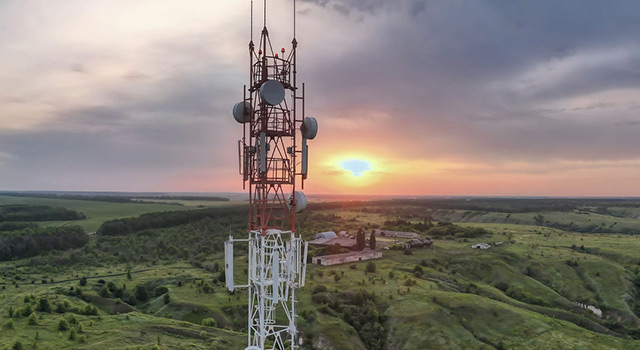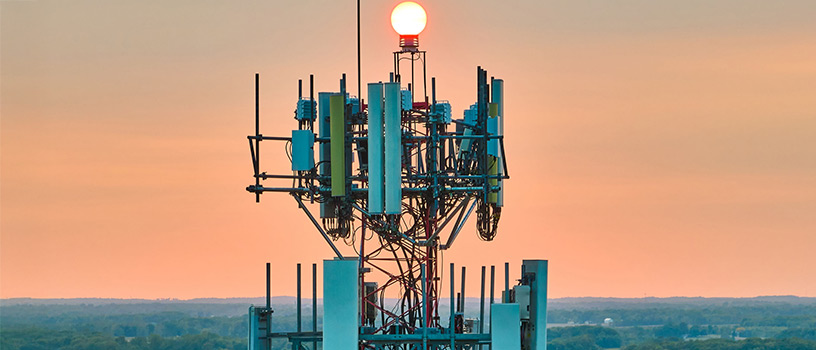

Signals+ ニュースレター登録
Signals+はコネクティビティ、デジタルヘルス、モビリティ、スマートインダストリーに関する最新情報をお届けします。
ありがとうございます。ご登録のメールアドレスにお送りしたメールを確認し、ニュースレター登録を完了させてください。
世界中の人々の生活に影響を与える、画期的なテクノロジーに関する最新情報をタイムリーにお届けします。
閉じるTHE FIRST MADE-IN-INDIA 4G/5G WIRELESS COMMUNICATIONS NETWORK
Since the launch of India’s first mobile service in the mid-1990s, the country has relied solely on imported wireless base station technology and know-how from international providers. But all that is beginning to change. Under a flagship program driven by the Government of India, the world’s largest democracy is currently partnering with the local private industry to deploy the first-ever, world-class mobile network built solely using “Made in India” products.
A government-owned operator was looking for a trusted technology partner capable of supporting one of the most ambitious network roll-outs in the world with the requirement to deliver 100,000 base stations in a highly compressed timeline. Tejas Networks, as part of a consortium, stepped up to the challenge. Tejas has nearly 25 years of experience developing carrier-class telecom and networking products and was looking to partner with a global semiconductor leader having deep domain experience and technology expertise while designing and developing its 4G/5G wireless communications products. Analog Devices, Inc. (ADI) fit the bill perfectly.
AT A GLANCE
COMPANY
Tejas Networks Ltd. designs and manufactures high performance wireline and wireless networking products for telecommunications service providers, internet service providers, utilities, defense, and government entities in over 75 countries.
APPLICATION
4G base stations and radio units meeting PA efficiency goals, and stringent 3GPP requirements.
CHALLENGE
Deploy a network of 100,000 base station radios in a highly compressed timeline. Achieve exceptional productivity and yield while meeting strict global standards.
GOAL
Tejas is supporting a Government of India mission to bridge the digital divide and provide millions of people in semi-urban and rural communities with affordable access to high speed 4G wireless communications.
INDIA’S DIGITAL DIVIDE
THE PERCENTAGE OF INDIA’S RURAL POPULATION THAT USES THE INTERNET VERSUS THE URBAN POPULATION. 1
India is one of the largest telecom markets in the world, with over 1.2 billion mobile subscriptions, of which ~750 million use smartphones.2 Almost all villages are connected, but most semi-urban or rural areas still use limited capacity 2G and 3G networks and cannot take advantage of 4G’s expanded capabilities. Access to high speed internet is critical for remote healthcare and banking services, online learning, remote jobs, and e-commerce. Even the smallest shop or food stall needs a digital payment program to survive in today’s India. The economic, personal, and social benefits others enjoy in the rapidly digitizing world are lost to those without 4G’s capabilities.
The leading government-owned operator aims to help bridge the digital divide and further India’s transformation into an equitable, digitally empowered society and knowledge economy by upgrading specific semi-urban and rural communities with high speed 4G wireless communications. The task required a network of 100,000 base station radios, each serving 250 to 300 subscribers, or 30 million people.

“A robust broadband infrastructure, when combined with foundational software and user-centric applications, will bring the power of the internet to all and will go a long way in realizing Government of India’s vision of a trillion dollar digital economy in the next three years.”Kumar N. Sivarajan
CTO and Co-founder of Tejas Networks
MEETING STRICT STANDARDS IN A COMPRESSED TIMELINE

“Tejas has nearly 25 years of experience in developing carrier-class wireline telecommunication products, but now sought a collaborative partner to expand its portfolio to include world-class wireless products as well,” said Bill McKenney, Wireless Comms Marketing Director, ADI.
Every wireless location must comply with multiple parameters, global 3GPP requirements, and strict transmission standards. Power amplifier (PA) efficiency is critical as it helps reduce energy, eliminate heat, and reduce radio unit (RU) weight. The radio’s system transmitters must also meet specified adjacent channel leakage ratio (ACLR) performance limits—a measure of the amount of power leaking into adjacent channels.
McKenney said, “Tejas didn’t choose ADI just because of our wireless expertise—we needed to demonstrate our wireless product’s technical capabilities and also bring a strong support commitment.” In addition, to meet the Indian operator’s stringent timelines, Tejas had to scale its production capacity to build nearly 10,000 radio units every month, which required exceptional productivity and yield. ADI was there to contribute expertise and support in the creation of 4G radio units.
A COLLABORATIVE ENGAGEMENT
With a tested reference design as a starting place, the ADI team shared its 4G wireless domain experience and maintained ongoing, cooperative interaction. ADI and Tejas had daily technical calls with up to 25 people, exchanging information, identifying problems, and overcoming issues. “Tejas and ADI teams in India worked with the DPD and transceiver teams from the US, and Ottawa, Canada, almost every day for two months,” said McKenney. “The cross-company teams were testing ideas and problem solving together to make sure that the project would be successful.”
A key challenge in the development of base stations was minimizing the size, weight, and power (SWaP) of the radio units. SWaP considerations are critical to a cell tower’s efficient and reliable operation. ADI’s components offer one of the lowest power solutions available, which is crucial as radio components directly affect the entire product’s power consumption. Tejas and ADI also worked together to create a radio unit of less weight than those of competitors. The primary focus was on the digital boards.
After completing the radio unit, Tejas improved its production process to the point where it significantly exceeded its monthly production targets. Today, with 86,000+ units shipped as of December 31, 2024, they are well on track to complete the whole deployment within committed timelines. In total, since the first introductory meeting, it’s been a multiyear journey.
A VISION FOR THE FUTURE

Working together, ADI has helped Tejas design and commercialize a world-class 4G radio that is enabling India to reduce the digital divide between urban, semi-urban, and rural areas, allowing millions of people to gain access to diagnostics and healthcare services, enriching their skills with online learning, and empowering micro and small businesses to realize economic gains with increased ease of doing business, remote banking and digital payment programs.
With a vision for the future, Tejas and ADI developed the 4G radios with the potential of being upgraded to 5G through a software upgrade. 5G is the next step in mobile communications with faster upload and download speeds, ultralow latency, carrier-class reliability, and higher scalability. The estimated cumulative impact of 5G on the Indian economy, according to a steering committee chaired by Arogyaswami Paulraj, Professor Emeritus, Stanford University, could touch the $1 trillion mark by 2035.
References
1 Apoorva Mahendru, Mayurakshi Dutta, and Pravas Ranjan Mishra. “Digital Divide.” India Inequality Report, Oxfam India, 2022.
2 “TMT Predictions 2022”. Deloitte, February 2022.




